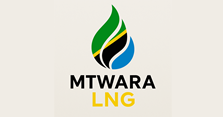Project Justification
The Mtwara LNG Facility is a flagship infrastructure investment designed to unlock Tanzania’s natural gas potential and transform it into tangible economic growth, industrialization, and regional energy security. Strategically located in southern Tanzania, the facility integrates LNG production, CNG distribution, and an internal industrial park—providing a flexible, clean energy supply platform for domestic use and export.
The project directly aligns with Tanzania’s Vision 2025, targeting energy accessibility, semi-industrialization, job creation, and improved living standards.
Why the Project Is Justified
- Energy Diversification: Reduces reliance on imported fuels by using domestic gas for power, transport, and industrial applications.
- Catalyst for Industrialization: Supports energy-intensive manufacturing, agro-processing, and export-oriented industries within a dedicated industrial park.
- Regional Clean Energy Corridor: Anchors a modular LNG and CNG hub network to reach underserved areas across East and Southern Africa.
- Decarbonization Pathway: Displaces diesel and HFO with natural gas, cutting emissions for industry, transport, and mining sectors.
Planned Distribution Hubs
- Tanzania: Dodoma, Arusha, Mwanza, Mbeya, Tanga, and Zanzibar
- Zambia: Lusaka and Kasompe
- DRC: Tenke–Fungurume and Mutaka
- Mozambique: Tete and Chimoio
- Kenya: Nairobi and Mombasa
Market Demand and Strategic Necessity
Why the Project Is Necessary
Despite having abundant gas reserves, Tanzania remains dependent on high-emission fuels. Meanwhile, domestic industries and transport corridors lack access to clean, stable, affordable energy.
The Mtwara LNG Facility provides a strategic solution by:
- Unlocking Domestic Value: Monetizing stranded gas reserves as LNG/CNG for regional markets, beyond raw gas exports.
- Replacing Polluting Fuels: Offering cleaner alternatives for industries, logistics, and public transport fleets.
- Bridging Infrastructure Gaps: Deploying modular gas hubs and virtual pipelines to bypass pipeline limitations.
- Driving Industrialization: Powering co-located and inland industrial clusters with competitively priced energy.
- Enhancing Energy Security: Diversifying both domestic energy supply and cross-border trade corridors.
- Creating Jobs and Skills: Generating up to 37,000 jobs and fostering local expertise in LNG/CNG logistics.
Domestic Natural Gas Supply
Tanzania’s gas reserves offer a secure feedstock base for the Mtwara LNG Facility, enabling phased expansion and long-term reliability.
Primary Supply Sources
Ntorya Gas Field (Ruvuma Basin)
A key onshore discovery with ~1.3 Tcf of recoverable reserves, located just 30 km from Mtwara:
- Short pipeline connection minimizes infrastructure costs and environmental impact.
- Ideal for phased production to match LNG demand growth.
Mozambique Offshore – Area 1 (Rovuma Basin)
Mozambique’s vast offshore reserves provide a complementary supply:
- Bilateral pipeline and trade agreements unlock cross-border integration.
- Shared infrastructure improves economies of scale and regional resilience.
Strategic Supply Benefits
- Diversified Feedstock: Combines Tanzanian onshore and Mozambican offshore reserves.
- Scalable Growth: Modular expansion tailored to market development.
- Domestic Value Retention: Keeps gas revenues and jobs within the national economy.
- Regional Integration: Supports bilateral energy trade and infrastructure cooperation.
- Climate Impact: Supports fuel switching and complements renewables.
Gas Demand Analysis
Tanzania – Unlocked Demand Beyond Pipelines
While Dar es Salaam benefits from piped gas, the rest of the country remains underserved.
Key Demand Drivers
- Power Generation: LNG/CNG can stabilize and expand grids in Dodoma, Mwanza, Arusha, and Tanga.
- Industrial Clusters: Off-pipeline industries (cement, mining, agro-processing) in Morogoro, Mbeya, and Tabora require virtual gas supply.
- Transport Sector: National CNG network expansion supports municipal buses, logistics fleets, and long-haul transport.
- Clean Cooking: Rural micro-distribution of LNG replaces charcoal and kerosene, improving health and reducing deforestation.
Mozambique – Lessons from a Mature Market
Mozambique’s success highlights a critical insight: infrastructure must be inclusive. Its failure to extend gas access inland limits broader benefits.
Tanzania’s Response
- Link gas directly to inland SEZs, industrial parks, and mines.
- Prioritize rural energy access and domestic economic transformation.
Zambia, DRC, Kenya – High Demand, Low Access
These countries suffer from:
- No pipeline links
- Diesel dependency
- Energy deficits in critical industrial zones
Mtwara’s Advantage
- Supplies LNG/CNG via road and rail
- Creates regional hubs in Copperbelt (Zambia/DRC), Nairobi, and Mombasa
- Powers mining, manufacturing, and transport sectors
Asia & Southern Africa – Global Demand Anchors
Asia
- Japan and India seek stable LNG supplies from geopolitically stable partners
- SE Asia demands modular, flexible LNG supply—well aligned with Mtwara’s capabilities
Southern Africa
- South Africa, Botswana, Zimbabwe are pivoting to LNG
- Tanzania offers a nearer, lower-carbon route than distant suppliers
Economic Impact and Value Proposition
Macroeconomic Contributions
- Over $4.5 billion in FDI and infrastructure investment
- Major fiscal revenues from taxes, royalties, and gas sales
- Foreign exchange from regional and global LNG/CNG exports
Infrastructure Transformation
- National gas and logistics corridors from Mtwara to hinterlands
- Multi-modal hubs: rail, road, port, and gas terminals
- New SEZs and industrial zones powered by CNG/LNG
Employment & Human Capital
| Phase | Direct | Indirect | Total |
|---|---|---|---|
| Construction | 12,000 | 9,000 | 21,000 |
| Operations | 6,000 | 4,000 | 10,000 |
| Renewable Add-on | 3,000 | 3,000 | 6,000 |
| Total | 21,000 | 16,000 | 37,000 |
- Training programs in welding, gas metering, logistics, and operations
- Focus on youth employment and inclusion of women
Affordable Energy & Business Competitiveness
- Lower household energy costs
- Improved industrial productivity and cost savings
- Reliable fuel pricing for fleets and manufacturers
Industrialization & Export Diversification
- Powers sectors like fertilizers, steel, cement, food processing
- Boosts domestic manufacturing and reduces import reliance
- Enables LNG/CNG-powered EPZs for exports
Regional Integration & Market Reach
- LNG/CNG supply to Mozambique, Zambia, DRC, and Kenya
- Long-term export contracts with Asia
- Virtual pipeline models for landlocked economies
Climate, Health & Social Impact
- Reduces CO₂, SOx, NOx, and PM emissions
- Cuts charcoal and kerosene dependency
- Aligns with Tanzania’s Paris Agreement targets
Investor Proposition
- Long-term offtake contracts across diverse markets
- ESG-aligned investment in a stable, growing economy
- Mitigated risk and strong government backing
Strategic Economic Summary
| Impact Dimension | Value Delivered |
|---|---|
| Total Investment | Over USD 4.5 billion in capital expenditure |
| Employment Impact | Over 37,000 total jobs, including youth, women, and skilled professionals |
| Fiscal Contributions | Billions in royalties, corporate taxes, and VAT |
| Energy Affordability | Cheaper cooking, industrial, and transport energy; improved rural access |
| Industrial Competitiveness | Low-cost, stable energy for domestic manufacturing and exports |
| Export Expansion | Regional LNG/CNG and global offtakes; virtual pipeline into landlocked markets |
| Climate and Health Gains | Lower emissions, reduced deforestation, improved public health outcomes |
| National Growth Driver | Accelerates GDP, drives inclusion, enhances investor confidence |
Conclusion: A National Asset for Regional Prosperity
The Mtwara LNG Facility is a once-in-a-generation opportunity to transform Tanzania’s energy wealth into sustainable development and inclusive growth. It is a national engine for industrialization, a regional energy enabler, and a global clean fuel supplier.
Through smart infrastructure, integrated planning, and strong partnerships, Tanzania is poised to lead Africa’s clean energy future—energizing progress across borders and beyond.


